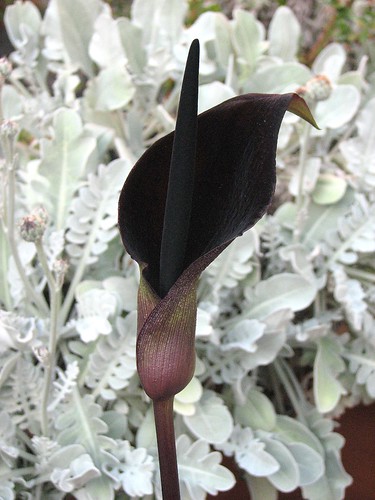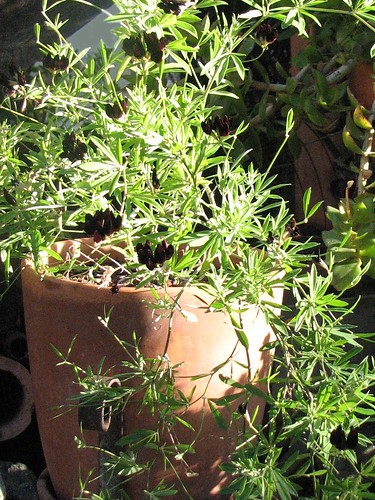
This is one of the very first plants I ever grew myself - from bulbs given to me when I was a teenager by a gardener in my hometown (yes, I still have them!). For me, in our mediterranean climate, the leaves are usually withering away by the time the flowers appear in spring. But perhaps that makes this dark flower stand out even more. I've placed it (a potted specimen) in front on this gray-white Centaurea ragusina for dramatic effect, but there is no reason why they could not grow together in the same planting.
The flowers, which attract flies for pollination, are mildly stinky (you have to literally put you nose into it to get a whiff) when they first open, and even slightly warm in temperature! The spathe (the enclosing bract) starts to fade to a deep burgundy or puce by the second day, though the spadix (the finger-like flower spike) remains very dark. Eventually, if well pollinated, the short cluster of orange-red berries will form in the place of the flower.
These mediterranean climate adapted bulbs go completely dormant in summer, returning with the cooling weather of fall and the promise of rain. The bulbs, if accidentally dug & sliced during this time, contain raphides (needle-shaped crystals of calcium oxalate) which can be very painful to hands or other tissue, so beware and handle with care (normal handling of this plant seldom if ever causes a problem).



